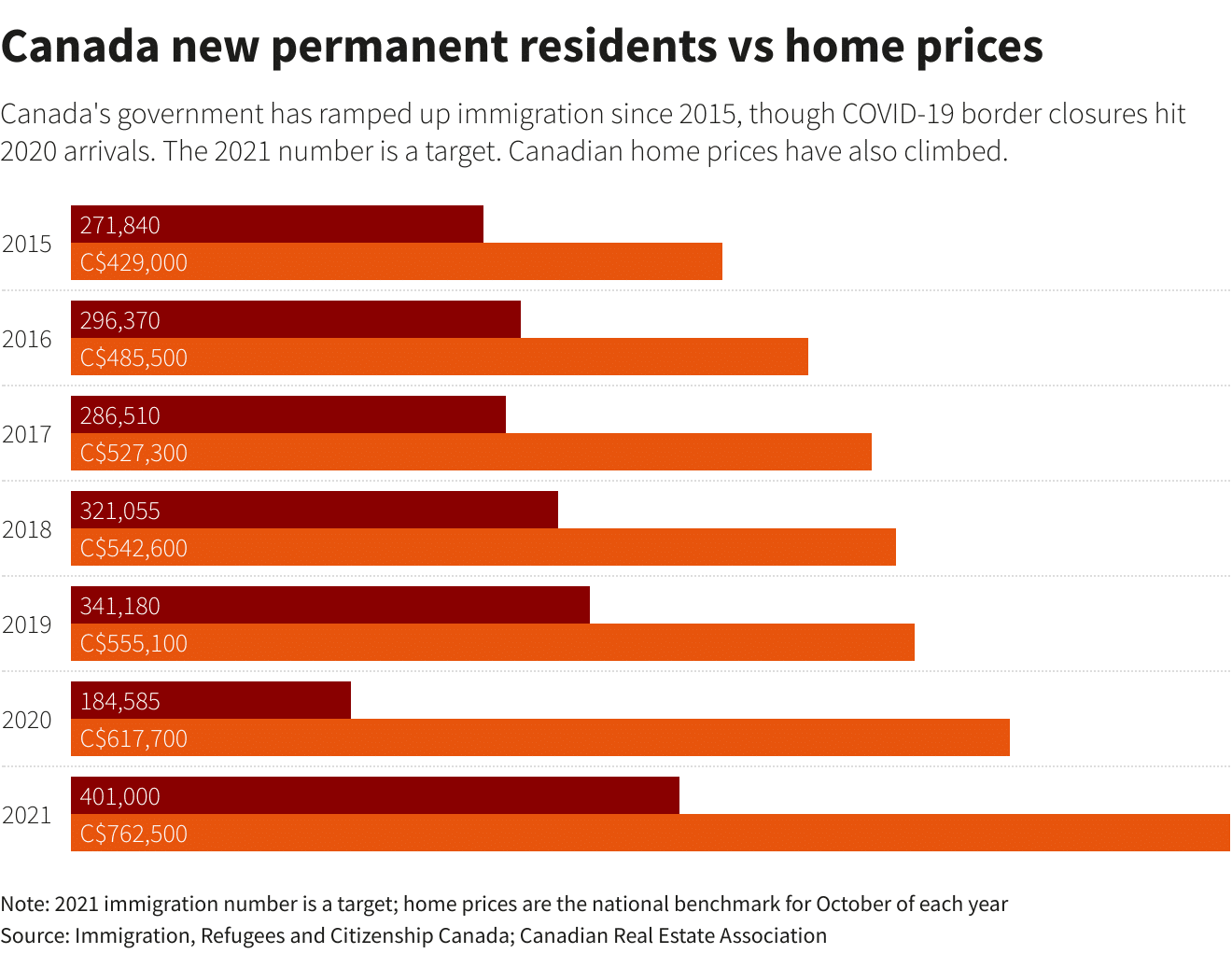The impact of immigration on Toronto’s real estate market is complex and multifaceted, shaping the urban landscape in several significant ways. Immigrants, by contributing to population growth, increase the demand for housing in a city already known for its bustling property market. With Canada set to maintain high immigration levels, with aims to admit up to 500,000 new permanent residents each year by the end of 2025, the demand for housing in Toronto is expected to further intensify 5.
While immigration does not directly add to overall inflation according to the Bank of Canada, it does exert pressure on the housing market 1. This is due to the fact that the majority of newcomers settle in populous regions like Ontario and British Columbia, where housing prices are already high. For instance, the average price of a home in Ontario and British Columbia, where many newcomers choose to settle, was reported as $856,269 and $966,181 respectively, as of July 2023 5.
The housing crisis in Canada, particularly in hotspots like Toronto, involves challenges such as declining affordability and rising mortgage costs, which are exacerbated by increased competition for homes, including rental properties 3. With house prices soaring, some investors and potential homeowners point to the influx of immigrants as a contributing factor to rising prices due to heightened demand 5.
However, it’s also recognized that the shortage of housing that contributes to the pressures in Toronto’s real estate market can be attributed to factors besides immigration, such as high residential construction costs which have seen a 51% increase since the start of the pandemic, leading to higher prices. This has been associated with a shortage of skilled workers, low supply of construction materials, and increased input costs 5.
As Toronto’s real estate market contends with these forces, the Canadian government and economists suggest that immigration could be part of the solution to the housing shortage, notably by replenishing the labor force needed to build new housing. This is predicated on the idea that immigrants not only add to the pool of potential home buyers but also contribute as part of the workforce in construction and other related sectors, addressing skilled trade vacancies 5.
In conclusion, the real estate market in Toronto is experiencing ongoing challenges due to a combination of immigration, other demographic factors, and market dynamics. While the city’s real estate is impacted by the growing populace through immigration, the response to the housing shortage and affordability crisis involves a multi-faceted approach that includes increasing the housing supply and making systemic improvements in the construction industry and labor market
